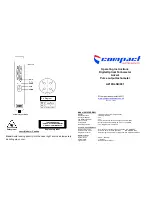3 – 1
Transpector SPS Operating Manual
Chapter 3
Connecting Transpector SPS
3.1 Introduction
Transpector SPS communicates via Ethernet. Devices on an Ethernet network
have two identifying addresses: an IP address and a MAC address.
IP addresses are assigned to identify individual devices on a network. Each
device on an Ethernet network must have a unique IP address.
IP addresses can be reassigned to other devices on the network as long as
each device has a unique IP address.
MAC addresses are unique for each device. MAC addresses are never
duplicated.
3.2 General Networking Information
3.2.1 IP Addresses
IP addresses can be either static or dynamic.
Static (manual) IP addresses are set by the user and are changeable by the
user. Static IP addresses are preferred.
Dynamic (automatic) IP addresses are automatically set by a host or by a
server on a network. Dynamic IP addresses can be set through Dynamic Host
Communication Protocol (DHCP).
NOTE:
When using Static IP addresses on a large network (e.g., on a company
network), a block of addresses should be reserved for static IP address
use and prohibited from being assigned by the DHCP server (host). This
will avoid duplicate IP address conflicts.
CAUTION
Use static IP addresses with Transpector SPS. Using
DHCP, the host server may generate a new IP address if
Transpector SPS is taken offline and then returned online
or if there is an IP address conflict on the network.
If the Transpector SPS IP address is randomly changed
during data acquisition, FabGuard will not reconnect to
the new sensor IP address, which will result in a loss of
communication and loss of data.
Transpector SPS follows the IPv4 IP address convention. An example IP address
is
192.168.1.100
. Each of the four parts is referred to as an “octet.” The
IP address consists of a Network Prefix and a Host Protocol.


















